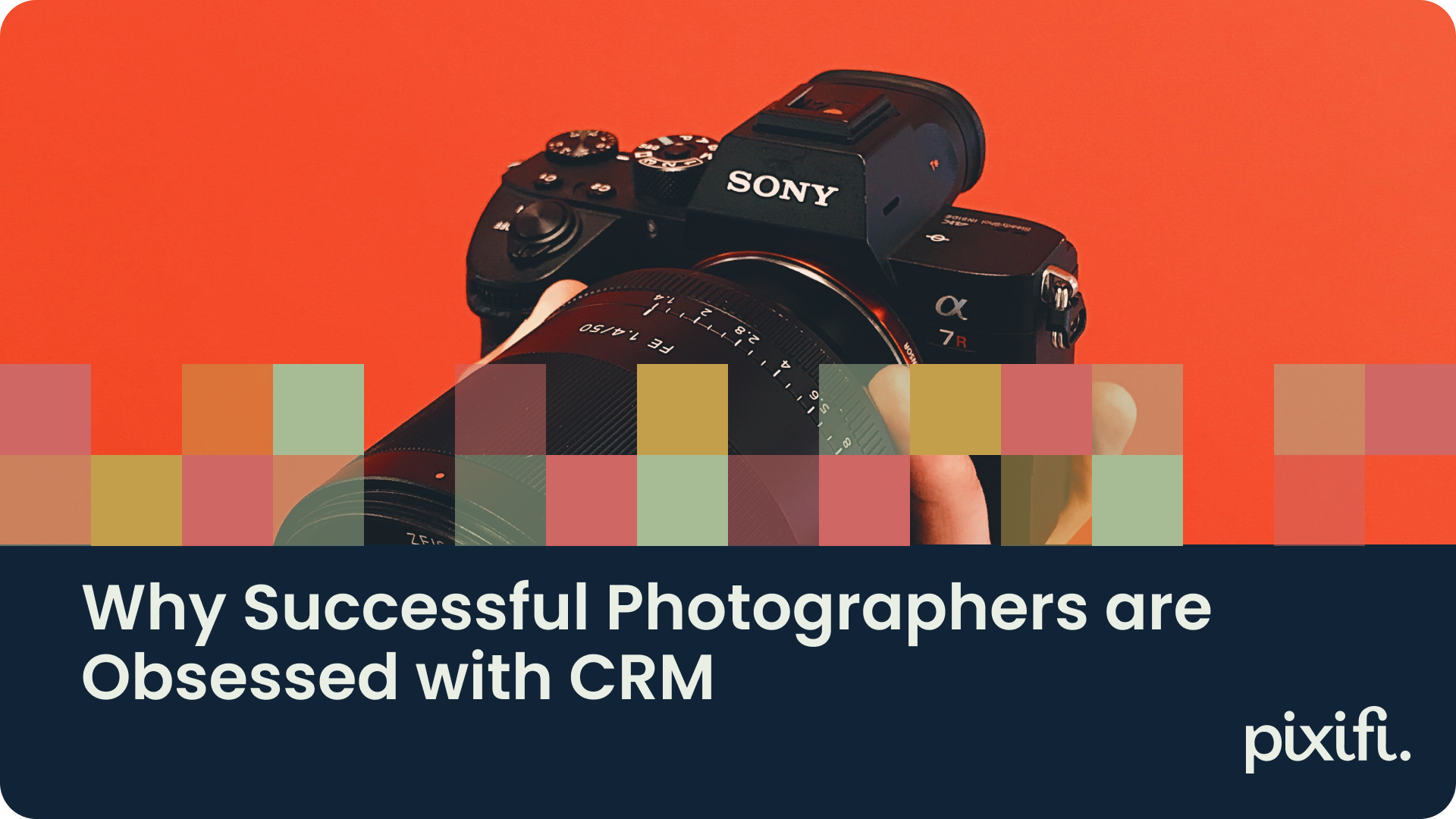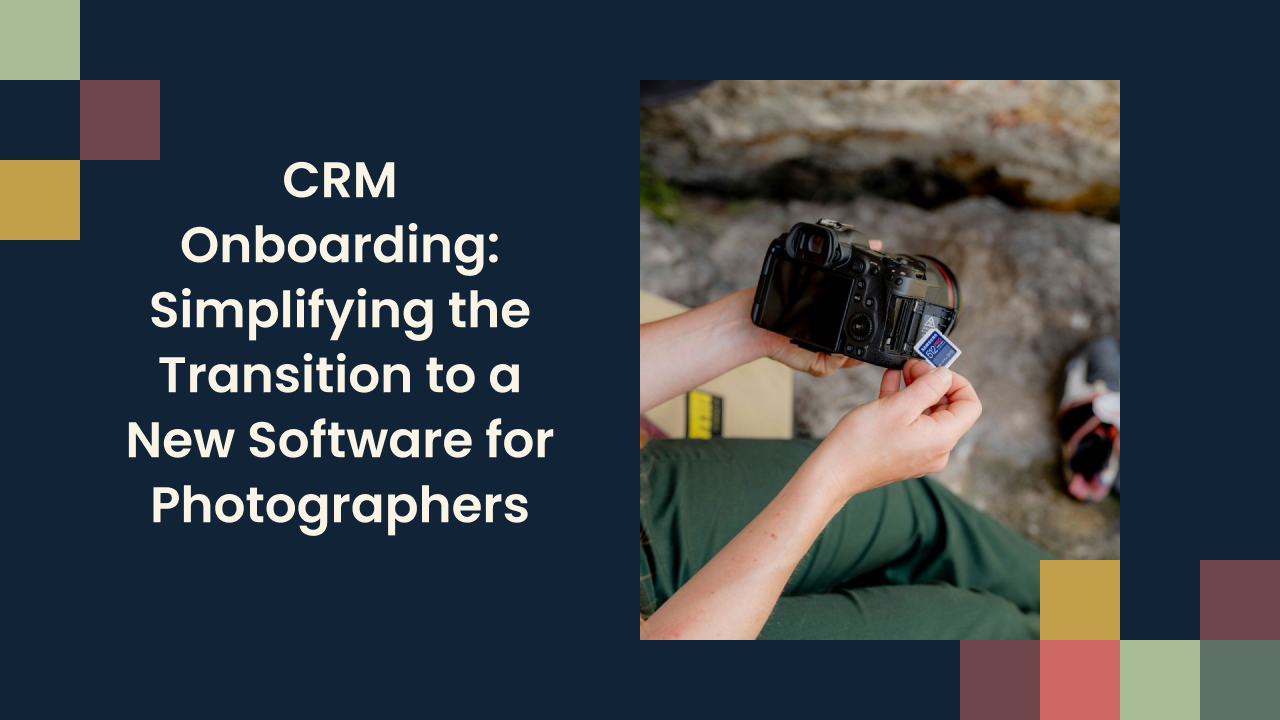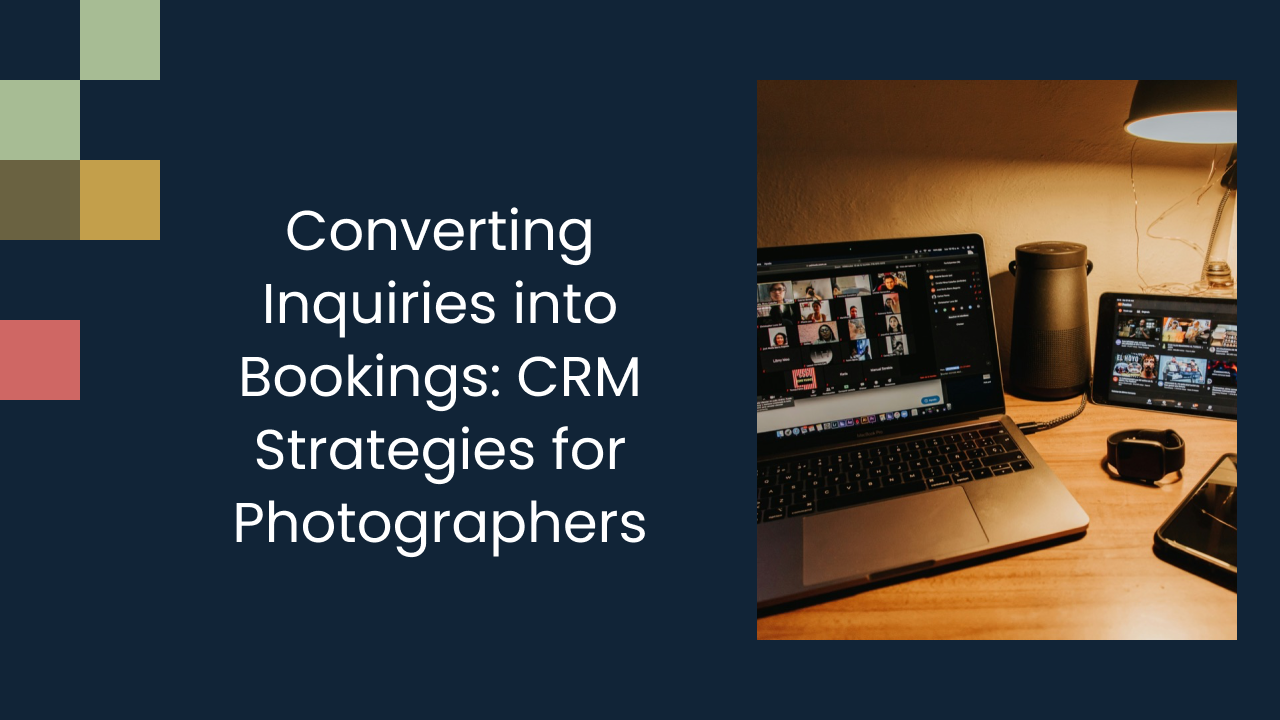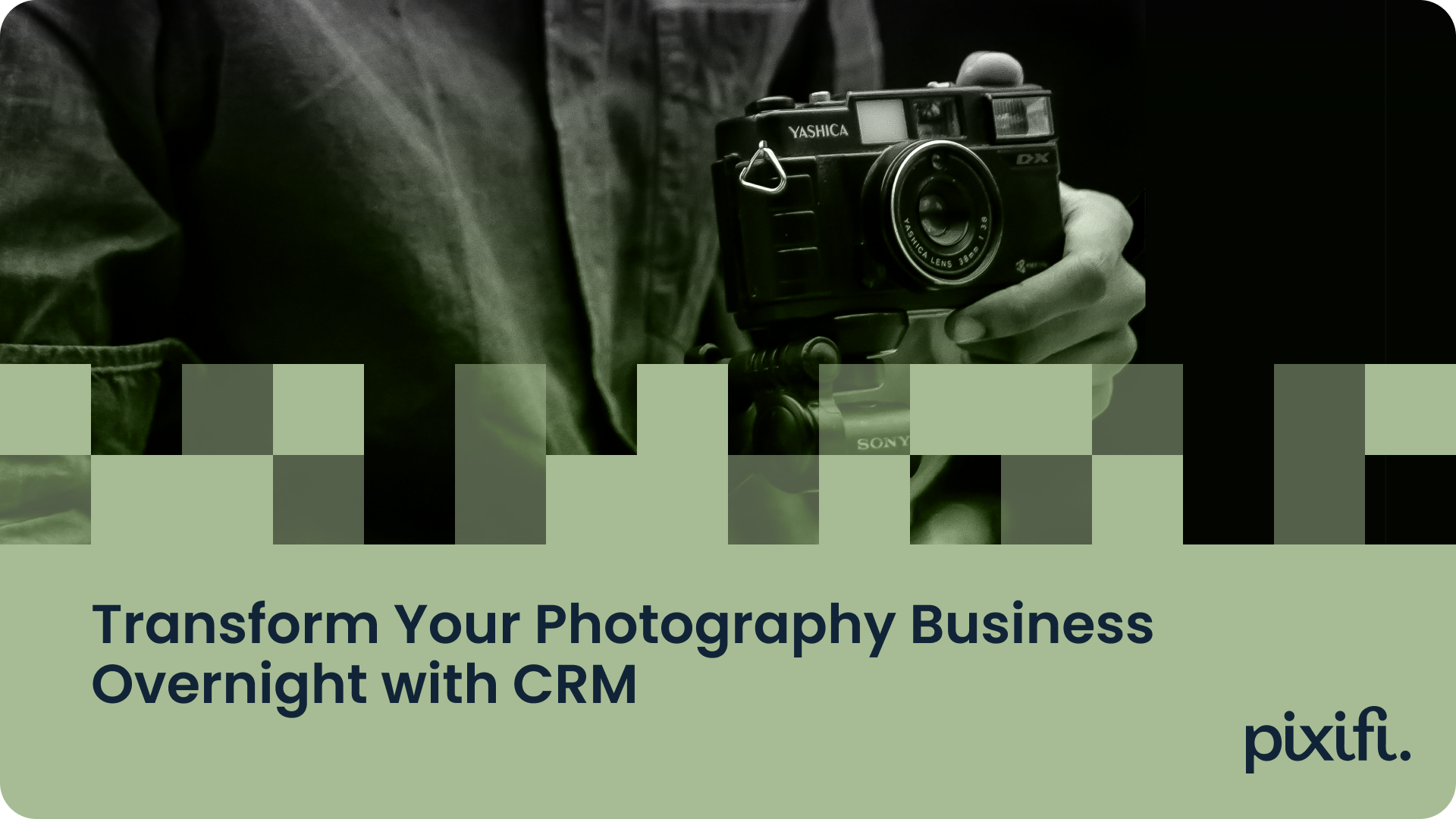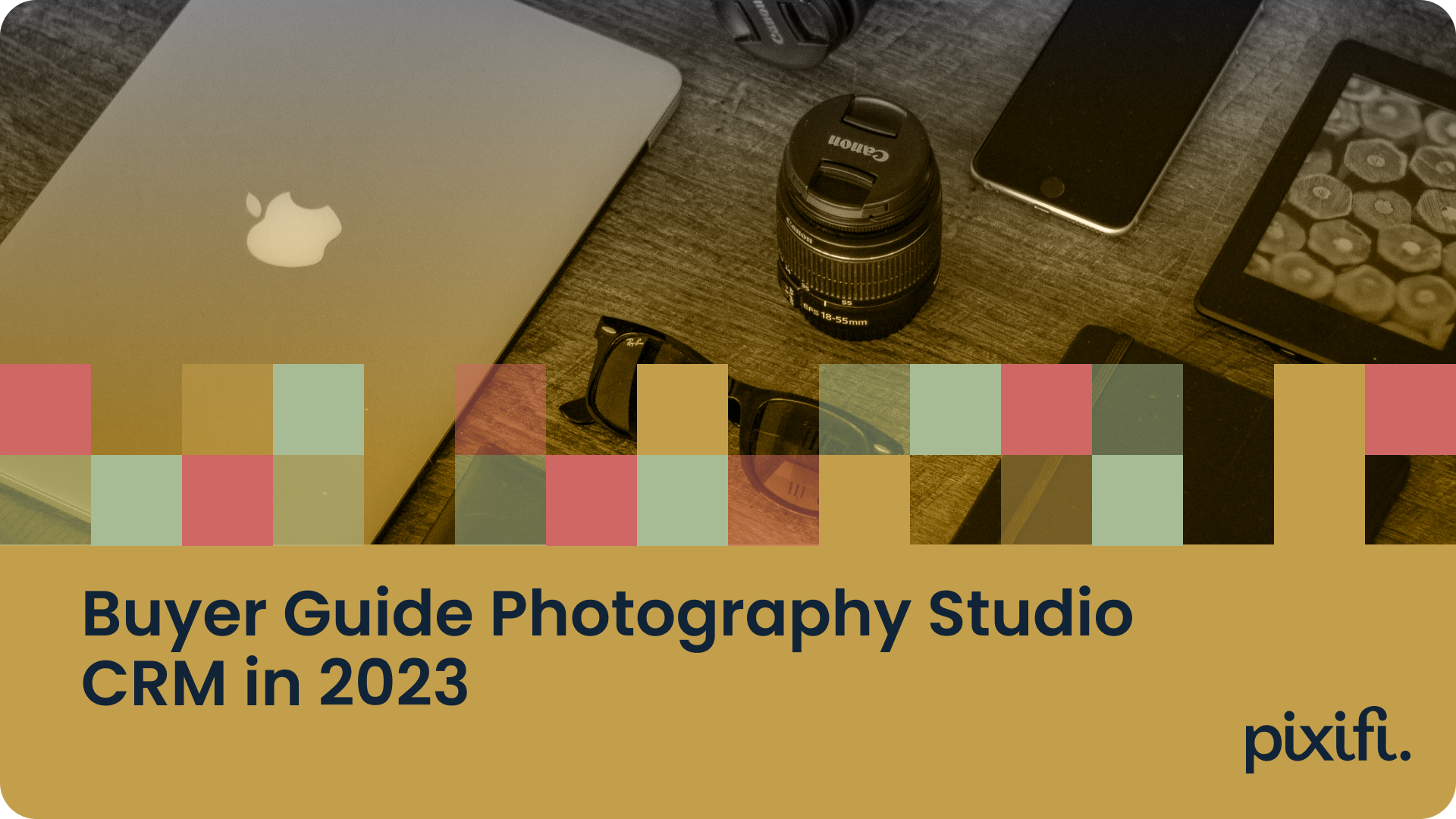Say Goodbye to Lost Leads: How Photographer CRM Revamps Client Tracking
In today's competitive photography industry, client tracking plays a crucial role in the success of your business. Understanding the importance of client tracking and how it can impact your photography business is vital. Fortunately, with the help of a reliable Customer Relationship Management (CRM) system, you can revolutionize your client management and say goodbye to lost leads. Let's explore how Photographer CRM can revamp your client tracking efforts.## Understanding the Importance of Client Tracking in Photography Business
Client tracking involves keeping a record of your potential and existing clients, their preferences, bookings, and interactions with your business. It allows you to personalize your services and tailor your approach to each individual client. By tracking your clients, you can develop stronger relationships, deliver exceptional experiences, and boost customer loyalty.
When it comes to running a successful photography business, client tracking is an essential aspect that should not be overlooked. The ability to keep a comprehensive record of your clients and their specific needs can make a world of difference in providing a personalized and memorable experience. Imagine being able to greet a client by name, recall their favorite type of photography, and anticipate their preferences before they even mention them. This level of attention to detail not only impresses your clients but also makes them feel valued and appreciated.
The Role of CRM in Client Management
A CRM provides a centralized platform where you can store detailed information about your clients. It allows you to gather data from various touchpoints and consolidate it into a single accessible database. With a CRM, you can easily manage contacts, view client histories, track communication, and streamline your client management process. This enables you to offer a personalized experience to each client, making them feel valued and appreciated.
Implementing a CRM system in your photography business can revolutionize the way you manage your clients. Gone are the days of scattered notes and disorganized spreadsheets. With a CRM, you can have all the information you need at your fingertips, allowing you to provide a seamless and efficient service. From tracking client preferences to managing bookings and appointments, a CRM simplifies the entire process, freeing up your time to focus on what you do best - capturing beautiful moments through your lens.
How Lost Leads Impact Your Photography Business
Lost leads have a significant impact on your photography business. When potential clients slip through the cracks, you miss out on valuable opportunities for bookings and revenue. With a manual tracking system, it's easy to lose track of leads or forget to follow up. This can result in missed connections, lost business, and ultimately, a negative impact on your bottom line. Implementing a CRM can help you avoid these pitfalls and ensure that no lead goes unnoticed.
Imagine a scenario where a potential client expresses interest in your photography services but doesn't receive a timely response. They may assume that you're not interested or available, and move on to another photographer. By implementing a CRM, you can set up automated follow-up emails or reminders, ensuring that no lead falls through the cracks. This proactive approach not only increases your chances of converting leads into bookings but also showcases your professionalism and dedication to excellent customer service.
Furthermore, a CRM allows you to analyze and track the success of your marketing efforts. By monitoring which leads convert into paying clients and which ones don't, you can refine your marketing strategies and focus on the channels that yield the best results. This data-driven approach not only saves you time and resources but also maximizes your return on investment.
The Revolution of Photographer CRM
Photographer CRM has revolutionized the way photographers manage their businesses. With its comprehensive features and user-friendly interface, a good CRM ensures that you stay organized, efficient, and proactive in your client tracking efforts.
Imagine a world where managing your photography business is a breeze. No more juggling multiple spreadsheets, sticky notes, and endless email threads. With a photographer CRM, you can have all your client information, appointments, and invoices in one centralized location.
But what exactly makes a good photographer CRM? Let's delve into the key features that can take your business to the next level.
Key Features of a Good Photographer CRM
A good CRM for photographers should include features such as:
- Lead and contact management Managing leads and contacts is crucial for any photographer. With a CRM, you can easily keep track of potential clients, their contact information, and their preferences. No more lost business cards or forgotten details.
- Appointment scheduling Scheduling appointments can be a time-consuming task. A good CRM allows you to set up appointments with clients, send them automated reminders, and even sync with your calendar. This ensures that you never miss an important meeting or photo shoot.
- Automated client communication Staying in touch with your clients is essential for building strong relationships. A photographer CRM enables you to automate client communication, sending personalized emails or text messages at the right time. This helps you maintain a professional image and keeps your clients engaged.
- Task and follow-up reminders As a photographer, you have numerous tasks and follow-ups to manage. A CRM can help you stay on top of these by providing reminders and notifications. Whether it's sending a contract, following up on a lead, or delivering the final edited photos, a CRM ensures that nothing falls through the cracks.
- Invoice and payment tracking Keeping track of invoices and payments is crucial for the financial health of your business. A good CRM allows you to create and send professional invoices, track payments, and even send automated reminders for overdue payments. This ensures that you get paid on time and maintain a steady cash flow.
These features allow you to streamline your workflows, stay on top of your client interactions, and improve your overall efficiency. With a photographer CRM, you can focus more on your passion for photography and less on administrative tasks.
The Transition from Traditional Methods to CRM
Making the transition from traditional methods to a CRM might seem daunting at first. However, the benefits far outweigh the initial learning curve. Embracing technology and integrating a CRM into your business operations can save you time and effort in the long run by automating repetitive tasks and providing a holistic view of your clients.
Imagine being able to access all your client information with just a few clicks. No more searching through piles of paperwork or digging through old emails. A CRM allows you to have all the information you need at your fingertips, making your workflow more efficient and organized.
Moreover, a CRM can provide valuable insights into your business. You can analyze data such as client preferences, booking trends, and revenue streams. This information can help you make informed decisions, identify opportunities for growth, and tailor your services to meet the needs of your clients.
Transitioning to a CRM also allows you to provide a better client experience. With automated communication, timely reminders, and personalized interactions, your clients will feel valued and well taken care of. This can lead to increased customer satisfaction, positive word-of-mouth referrals, and ultimately, more business for you.
So, don't be afraid to embrace the revolution of photographer CRM. Take the leap and discover how it can transform your photography business for the better.
Benefits of Using CRM in Photography Business
Using a CRM in your photography business offers numerous benefits that can significantly impact your success.
Improved Client Relationship Management
A CRM allows you to build stronger relationships with your clients by providing valuable insights into their preferences and needs. By understanding your clients better, you can offer personalized recommendations, communicate more effectively, and exceed their expectations, leading to increased customer satisfaction and loyalty.
Efficient Lead Tracking and Conversion
A CRM simplifies lead tracking and conversion. With its automation capabilities, you can capture leads from various sources, assign them to appropriate staff members, and track their progress through the sales pipeline. This enables you to identify hot leads, prioritize follow-ups, and increase your chances of converting potential clients into loyal customers.
Choosing the Right CRM for Your Photography Business
When selecting a CRM for your photography business, there are several factors you should consider.
Factors to Consider When Selecting a CRM
- Cost and affordability
- User-friendliness and ease of implementation
- Scalability and customization options
- Integration with other tools or software
- Customer support and training
By evaluating these factors, you can make an informed decision that aligns with your business needs and goals.
Top CRM Options for Photographers
Some popular CRM options for photographers include:
- ShootQ
- Pixifi
- 17hats
- HoneyBook
Each of these CRM systems offers unique features and benefits, so it's essential to explore their capabilities and consider which one best suits your specific requirements.
Implementing CRM in Your Business Operations
Implementing CRM in your photography business is a strategic process that requires careful planning and execution.
Steps to Successfully Integrate CRM into Your Business
- Define your goals and objectives: Identify what you want to achieve by implementing a CRM system. Set clear goals and align them with your business strategy.
- Choose and customize the right CRM: Select a CRM that meets your requirements and customize it according to your workflows and processes.
- Import and organize your data: Transfer your existing client data to the CRM and organize it in a logical and structured manner.
- Train your team: Provide adequate training to your team members to ensure they understand how to use the CRM effectively.
- Test and refine: Continuously test and refine your CRM implementation to optimize its performance and address any issues.
Overcoming Challenges in CRM Implementation
CRM implementation may face challenges such as resistance to change, data migration difficulties, or initial workflow adjustments. Overcoming these challenges requires effective communication, training, and managing expectations. By addressing these concerns proactively, you can overcome any initial hurdles and reap the long-term benefits of using a CRM system.
Embrace the power of Photographer CRM and transform your client tracking efforts. By utilizing the features and capabilities of a good CRM, you can enhance client relationships, streamline lead tracking and conversion, and ultimately achieve greater success in your photography business. Say goodbye to lost leads and hello to a thriving and prosperous future!
Looking for an easier way to manage and grow your studio? Experience a platform built by a photographer, for photographers. Try it free for 2 weeks.

